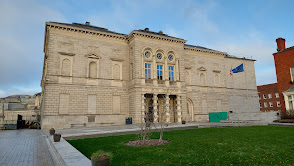
Dublin's Cityscape: A Blend of History, Modernity, and Cultural Divides
Posted by Webjuice SEO Agency in Dublin on
Dublin’s cityscape is a dynamic blend of history, culture, and modern development. The historic city center is encircled by two canals, the Royal Canal and Grand Canal, and bordered by Heuston Railway Station and Phoenix Park to the west, and the IFSC and Docklands to the east. O'Connell Street, the city’s primary thoroughfare, serves as a hub for numerous Dublin Bus routes and the Green Line of the Luas. Key shopping areas, including Henry Street on the Northside and Grafton Street on the Southside, attract both locals and visitors.
Dublin’s inner city is often divided into several cultural quarters, each offering a distinct vibe and history. These include the Medieval Quarter, home to Dublin Castle, Christ Church, St Patrick's Cathedral, and remnants of the old city walls; the Georgian Quarter, centered around St Stephen's Green, Trinity College, and Merrion Square; and the Docklands Quarter, which includes Silicon Docks and the revitalized Dublin Docklands area. The Cultural Quarter surrounding Temple Bar is known for its vibrant arts scene, while the Creative Quarter between South William Street and George’s Street is a hub for innovation and design.
As the city continues to expand, Dublin’s suburbs are seeing rapid development. Notable northside suburbs like Blanchardstown, Finglas, and Malahide contrast with the southside suburbs of Tallaght, Sandyford, and Dún Laoghaire, each offering unique residential and community features. Since the late 2010s, high-density residential developments, including mid- and high-rise apartment complexes, have been introduced in areas like Sandyford, Ashtown, and Tallaght to accommodate the growing population.
Dublin’s cultural divide, once reflected in a north–south separation marked by the River Liffey, continues to shape the city's social landscape. The southside has traditionally been perceived as more affluent and genteel, while the northside often carries a more working-class reputation. In addition, coastal suburbs along the city’s eastern edge are sometimes distinguished from the more recently developed areas to the west, contributing to a mix of old and new, urban and suburban elements within Dublin’s expanding cityscape.
Overall, Dublin’s cityscape remains a vibrant tapestry of architectural styles, historical landmarks, modern developments, and cultural nuances, making it one of Europe’s most exciting and diverse cities to explore.